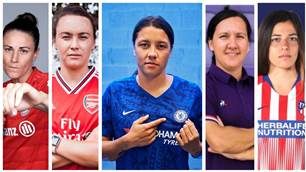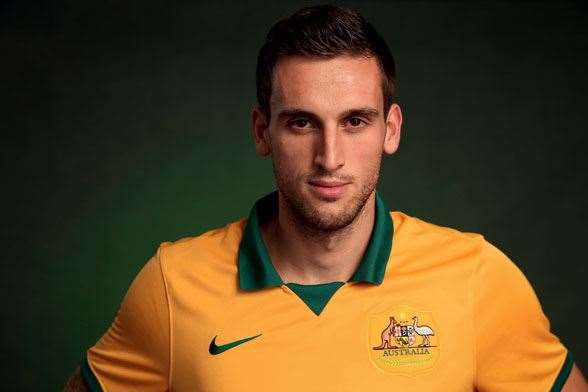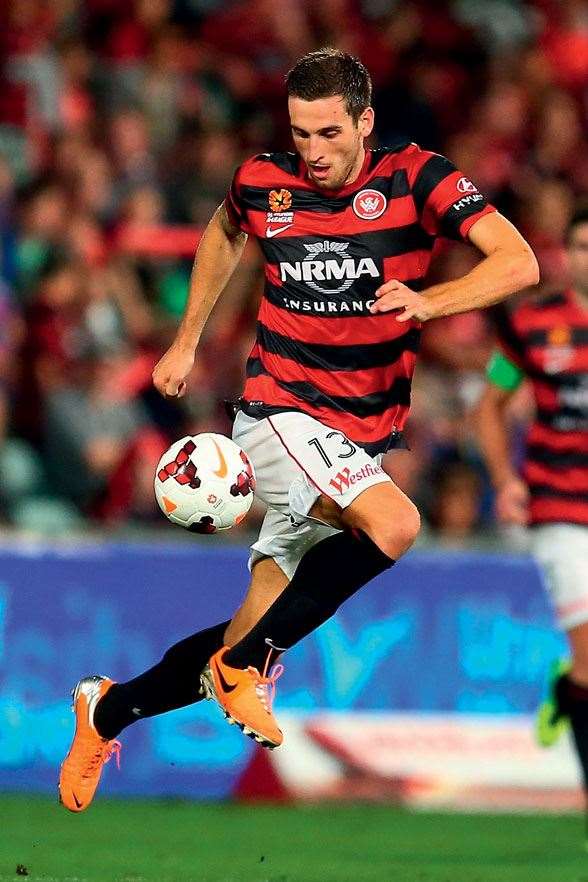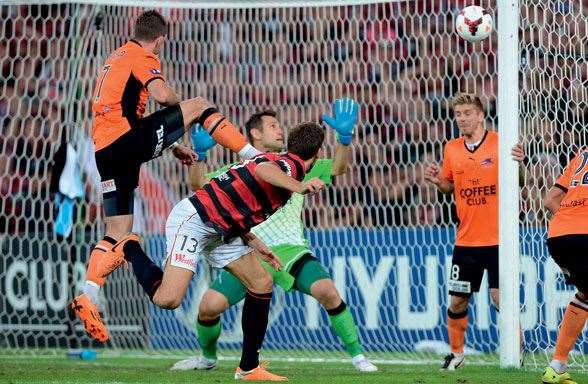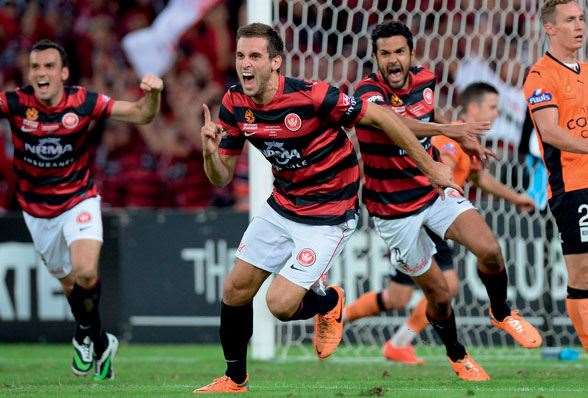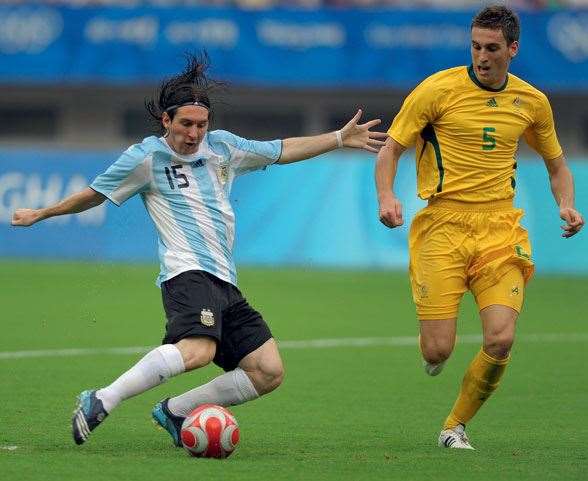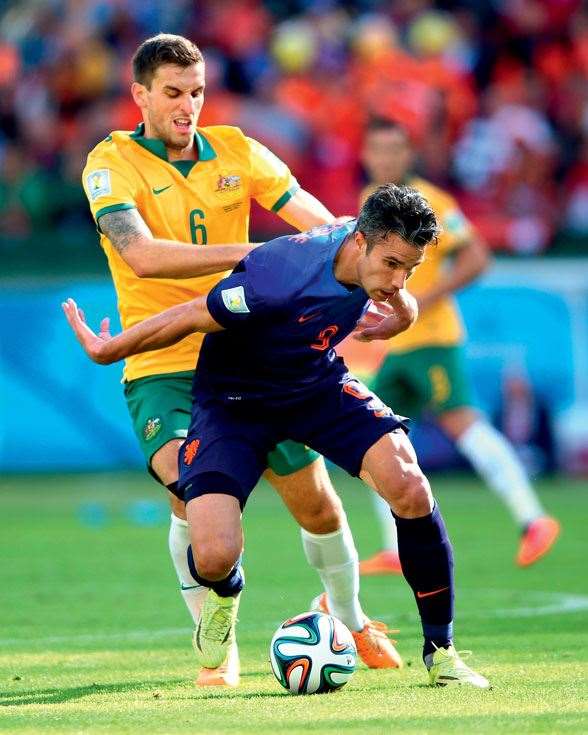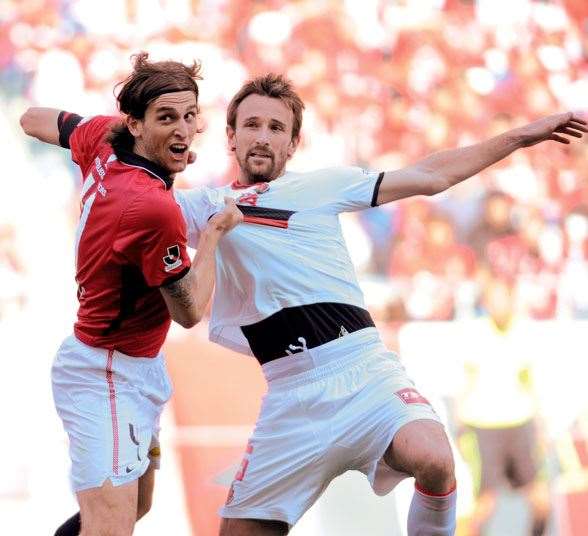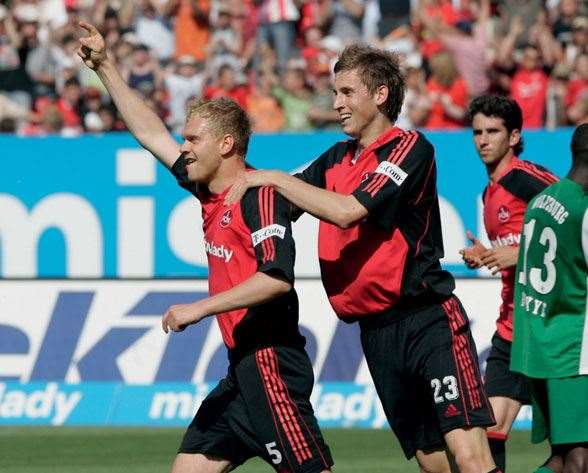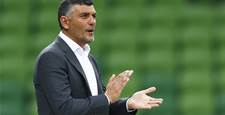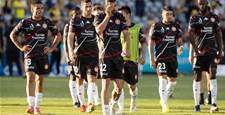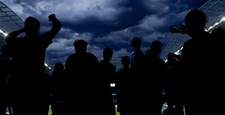"Spira" arrived home just in time to drive Australia's Asian Cup campaign.
FOR NEARLY A DECADE, Matthew Thomas Spiranovic has been seen as the future of the Socceroos. The next big thing, the great white hope, the new world-class defender to lead the national team in the future. And it’s not hard to see why. At 16 he was named best junior in Victoria and featured in all three Joeys matches at the 2005 Under-17 World Cup in Peru. A year later he’d graduated from the Australian Institute of Sport, played for the Young Socceroos and had been snapped up by German Bundesliga club FC Nurnberg – after one match for Melbourne Victory. By 18, he’d won a German Cup with his club and the Croatian Football Federation came calling, desperate to convince the stopper to switch allegiances as other Australian-born players such as Joe Simunic, Joey Didulica and Ante Seric had done in the past. He made his debut for the Socceroos at just 19, coming off the bench against Ghana in 2008. That same year, he played for the Olyroos in all three games at the Beijing Olympics, where he marked the likes of Argentina’s Lionel Messi. “Matthew was one of the outstanding players from the 2008 Olympic squad,” recounts Ron Smith, the team’s assistant coach. With European experience under his belt and a bright future in front of him, the stage was set for Spiranovic. Composed, talented, as well as technically proficient, he was primed to become a Socceroo regular. Australia has produced many tough defenders, but few have been blessed with his touch or skill.
However, as often is the case in Australian football, things didn’t quite go according to plan. FC Nurnberg was relegated from the Bundesliga in 2008 and at the end of the year Spiranovic picked up hamstring and ankle injuries, forcing him out for five months. The club’s coach, Hans Meyer, who had invested huge faith in the teenager, was sacked. Spiranovic spent most of 2009 in the reserves, battling niggles, and despite FC Nurnberg’s promotion back to the top flight a year later, game time was hard to command. A loan move to top Japanese club Urawa Red Diamonds beckoned, his time in the J-League initially promising. That lack of regular football, though, resulted in him being overlooked for the 2010 World Cup, with then-coach Pim Verbeek taking an ageing squad to South Africa. But with a recall to the Socceroos granted by new manager Holger Osieck following the tournament, and his transfer to Urawa made permanent, things were again looking up for the boy from Geelong.
However, on top of the Japanese season being disrupted by the Tohoku earthquake and tsunami in 2011, injuries again began to mount for the 22-year-old. (Another blow was the departure of his coach Volker Finke.) In July 2012, Spiranovic left for Qatari club Al-Arabi. It was a move largely panned by the Australian football community, which viewed the Middle East as a footballing backwater; where many Australian players went into semi-retirement and to cash in easy pay cheques.
Spiranovic spent a season in Qatar before he was on the move once more – to a destination that again surprised many. At 25, the elegant stopper came home in 2013 to join the Western Sydney Wanderers. The A-League’s newest club had caught the country by storm in its debut season and had now stolen a march on its rivals by snaring one of the most talented Australians plying their trade overseas. Spiranovic was back in his homeland, but seemingly with still plenty to prove.
******
FOR OVERSEAS-BASED SOCCEROOS, returning home to play in the A-League used to be seen as the death knell for their careers (a dead end, at least, for their global football aspirations). Tim Cahill passed it up as an option when he left the English Premier League to instead join the New York Red Bulls, while Mark Schwarzer famously rubbished such a move three years ago. But times change and Australia’s domestic competition is no longer the poor cousin it once was. The standard is improving each season and the quality of talent it’s attracting is on the rise.
For Matthew Spiranovic, returning to Australia was the right choice at the right time. He came home with the bright lights of Brazil firmly in his sights: “I just wanted to put myself in a good football environment. There was nowhere better than at Western Sydney under Tony Popovic. I just wanted to be playing regular football again and playing good football and hopefully put myself in the best position to go to the World Cup.” For the player known as “Spira”, his A-League gamble paid off. The defender made 23 appearances in the 2013-2014 campaign, helping the Wanderers to a second-place finish on the ladder and their second-straight grand final berth (they also passed the group stage of the Asian Champions League). He was a mainstay of Western Sydney’s defence as the club went within a whisker of claiming a grand final win over Brisbane Roar. Up 1-0 thanks to a sublime Spiranovic header, his first-ever goal in the A-League, the Wanderers looked home with four minutes left in the match. But a late Besart Berisha goal tied things up before Henrique finished from close range in extra-time, giving the Roar another historic come-from-behind grand final victory. The pain of that day at Suncorp Stadium still lingers: “I don’t think you ever really get over it. I think it’ll be easier if we hold up the trophy at the end of this season, that’s for sure.”
He may have missed out on the silverware, but Spiranovic’s club form caught the eye. Appearing in midfield at times for Western Sydney, such is his ability and versatility, Spiranovic enjoyed one of the best seasons of his career. Injury free and happy at Pirtek Stadium, the Wanderers brought the best out of him. And just before the World Cup, the defender signed a new contract with the club, agreeing to two more years with the red and black. “It’s a real joy and privilege playing in front of the Wanderers fans. I’ve played at fantastic clubs overseas and they’re really second-to-none here at the Wanderers. It’s a real pleasure going out and playing each week.”
Watching in the wings was Ange Postecoglou. The 49-year-old had taken control of the Socceroos in late 2013 after the sacking of Holger Osieck and was in desperate need of new blood. Postecoglou had started to get rid of the dead wood in the national team and regenerate it – with precious little time before the World Cup. Veteran centre-backs Lucas Neill and Sasa Ognenovski were on the way out. One of the first faces he turned to, unsurprisingly, was Spiranovic’s. The former Brisbane Roar boss had coached him with the Joeys eight years before and remained a strong supporter of the elegant, ball-playing defender. “He was always a fairly talented footballer,” Postecoglou remembers.
“You kind of knew he wasn’t the ordinary, particularly in the position he played, defender; particularly the type of defender you came across in Australia. He was one we always thought, with the right choices and progress, could become a really good footballer. He’s always been a bit of a thinker, you know. He thinks about the game and about his own personal development, and that hasn’t changed.”
******
THE 2014 WORLD CUP in Brazil was a mixture of emotions for the Socceroos, a rollercoaster of highs and lows that demonstrated what might’ve been, and what might be in four years’ time. The Australians went to South America with no expectations, written off before a ball had been kicked. They were placed in the group of death and were seen by all as cannon fodder for the Chileans, Dutch and Spanish; tipped to not score a solitary goal. Matthew Spiranovic went to this World Cup as the most crucial member of the Socceroos’ fledgling defence. Part of a back five that consisted of players with just a handful of international caps between them, Spiranovic was the most experienced with 18. He had already played under three different coaches with the national team, which he had been a part of on-and-off for six years. The Western Sydney Wanderer was the “young veteran” at 26 and was expected to lead this young brigade against the best in the world. In this sink or swim environment, Spiranovic thrived. The Socceroos might’ve lost all three of their World Cup games, and conceded three goals in each, but the 1.93m-tall centre-half was a standout. As a team the Aussies surprised, unlucky not to jag a point against Chile in their opening game and then playing the Oranje off the park for large chunks of their next match. The Socceroos were beaten in both those games, by one goal both times, but not bowed. Postecoglou’s positive, attacking brand of possession-football won him and his team many admirers.
Cool, calm and collected, Spiranovic’s distribution in Brazil was excellent. He misplaced just three passes in the entire tournament and impressed with his composure under immense pressure. Against Spain, Spiranovic completed all 23 of his passes and his accuracy on the ball made him one of the best performers at the World Cup, not only for Australia, but across all 32 nations involved.
“The thing with Matty is that he’d had some international experience, when a lot of the other young defenders we brought in didn’t,” Postecoglou says. “I thought this showed during the World Cup. He was very, very composed and, from our perspective, did an excellent job in adding some real calmness to what was a very, very inexperienced backline. I thought the whole team did well, but he was outstanding as part of that. I don’t think he’ll face much better strikers there. For the most part he handled himself very well and, particularly in the first two games, he imposed himself in those matches. The most important thing for us was that his body held up, which it hasn’t done in the past at international level.”
Tony Popovic, Spiranovic’s club coach and one of the best centre-backs to have ever worn the green and gold, is also effusive on his performances in Brazil. A veteran of the 2006 World Cup campaign and with 58 appearances for the Socceroos, the 41-year-old is well equipped on the art of defending: “I think Matt did pretty well. It was pretty much a new team put together by Ange in a very short space of time and their performances probably exceeded a lot of people’s expectations. Unfortunately the results weren’t what everyone would’ve liked, but I’m sure that will come. The performances were there and it’s a new era for the national team; I think Matt will be a big part of that.”
How the Socceroos have performed since the World Cup, with Spiranovic missing through injury, is also instructive. In the 2-0 friendly defeat to Belgium and the 3-2 win over Saudi Arabia in September, the Australian defence was fragile and prone to coughing up possession at the wrong times. Spiranovic’s calming influence and game smarts at the back were sorely missed.
In many ways Matthew Spiranovic is an old-school footballer. Tattoos don’t adorn his body and he doesn’t sport designer facial hair. He is not an ardent user of social media, writing a miserly 11 posts in the three years since he joined Twitter. Tall and lanky, he’s not the strongest or most athletic player. He is not often heard or seen in the media and controversy is never around him. You don’t see his face adorning billboards or marketing campaigns. Spiranovic is a laid-back, quietly spoken character who does his talking through his actions on the pitch. He’s not a big communicator on the field and many have described him as shy. His upbringing was in regional Victoria where family and football were his passions. The two were intertwined, his father Michael a player with local semi-professional club North Geelong Warriors, an outfit that has produced Socceroos such as Josip Skoko and Steve Horvat.
“I grew up with the game,” Spiranovic tells Inside Sport. “My father played; he never played professionally, but my uncles and my father loved the game. So it was pretty much inevitable that I would take up football. My Croatian background obviously played a big part in that. I’d have to say my father had the biggest influence; just his support from the very start in driving me up and down the highway from Geelong to Melbourne.”
From the Warriors, Spiranovic spent time at another historic Croatian-Australian club, the Melbourne Knights, the alma mater of Mark Viduka, Jason Culina and Ljubo Milicevic, before state and national junior selection followed. To Horvat, whose own distinguished career saw him spend time in Europe and in the old National Soccer League, Spiranovic is “a smart, level-headed young man with a good family backing and grounding”.
Just as the A-League was launching in 2005, the stopper was finishing at the AIS and close to securing a move to Germany. Transfers to Europe for young Australian footballers are prone to mishap and failure, but Spiranovic has no regrets. Speaking now, the defender is adamant he made the right call heading to the Bundesliga and chancing his arm as a teenager. “I say everything happens for a reason. I did spend a few weeks initially leading up to the first A-League season with Victory. However, I ended up in Germany with Nurnberg and spent four years there and I think that was terrific for my development. I was 17 and a half when I signed, playing amongst world-class players and with a great coach. At the same time every football career has its ups and downs and I think it’s made me a stronger person and player. I definitely experienced some tough times, but that’s beneficial in the long run.”
******
THERE HAVE BEEN BROKEN BONES, ankle problems, hamstring injuries and other complaints to deal with; growing out of favour with new coaches, adapting to different environments and cultures, and just plain, bad luck. Merely getting on the field every week has not always been easy for Matthew Spiranovic over the years, despite his obvious talent. And after his early troubles in Germany and Japan, you can see how the search for elusive game time has influenced his recent career choices.
On his much-maligned move to the Middle East, the centre back is unrepentant: “At the time it was the right opportunity for me. It meant playing regular football.Looking back, I definitely have no regrets in going to Qatar. People who have watched that league know there’s good-quality players. I felt I was being pushed and put up against some very good, attacking players. So in that sense I thought it was still a positive.” His arrival in the A-League was made with the same frame of mind – secure regular playing time, improve and continue your development. The lure of learning from Tony Popovic, one of the best young coaches in Australia and an all-time Socceroos great, at an ambitious and successful club, was too good to pass up. So far it’s been a match made in heaven. In Popovic’s eyes, Spiranovic’s decision to stay in Australia, despite strong overseas interest, is a vote of faith for the whole domestic completion. “It shows how happy he is, but I think it also shows the progress of football in Australia. Matt was very happy to secure himself another couple of years at the Wanderers. It shows how much the A-League has grown and how professional it is that a player, in a World Cup year, is happy to stay in Australia. It’s a great sign for us, our football club, the A-League here; everyone should be pleased to have Matt playing here.”
******
THE WORLD CUP and the 2013-2014 A-League season were perhaps the first signs of Matthew Spiranovic finally fulfilling his great potential. The player who Roy Hodgson wanted to sign for Fulham in 2009, who Brendan Rogers tried to get for Swansea City in 2011 and then for his new club Liverpool a year later, is living up to the big billing he’s been saddled with since he was in short pants. Spiranovic has never sought the hype or the expectation, which would be alien to someone with his humble background, but it’s something that has followed him regardless.
Football analyst Tony Tannous believes the next 12 months are vital for the defender: “I feel Spiranovic really needs another big season to consolidate his great work last year, and if he can stay injury-free, he might become the dominant figure at international level that he was in the A-League last season ... For a team like the Socceroos, who want to play but have had a few defensive issues, it’s important he produces his best, consistently, for club and country, as we don’t have too many central defenders with his ball-playing qualities. The fact he’s found some club stability and games at the Wanderers should help.”
With a new A-League season underway and an Asian Cup on home soil within sight, the pressure will ramp up on Spiranovic once again. Both the Socceroos and Western Sydney need a fit-and-in-form “Spira” if success can be realised. A pleasing thing is that the centre back is far from satisfied, nearly a decade into his footballing career, about his own progress. The 2014 World Cup was a highlight but he still wants to grow and get better.
Spiranovic has always had the technical gifts but he’s now adding the physical side, combined with leadership, to his game. The often-aloof figure has always been more Franz Beckenbauer than Tony Butcher as a defender, more Gerard Pique than Kevin Muscat, but now he’s showing a hard edge in his play. Tony Popovic believes there’s more development in him as he enters his prime and so does Ange Postecoglou. Both state that the 26-year-old has matured and is going to the next level; even establishing himself as the central figurehead of the new national team is possible. Perhaps the best of Matthew Thomas Spiranovic is yet to come.
“It’s up to him,” Postecoglou says. “He’s got that opportunity. He’s still young enough, too; he’s definitely got another World Cup in him and lots of international football. He seems pretty content at the Wanderers and he’s still got some challenges there; football will always throw challenges and I’m sure he’s still got some ahead of him. But I think he understands himself now better, manages his body better and I think he has more confidence in his own ability now. Having played at a World Cup, there should be no real doubts about whether he could compete there.”
Related Articles
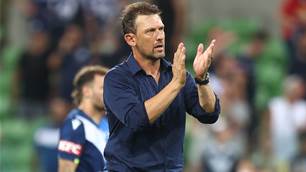
Returning stars can spur A-League's Victory: Popovic
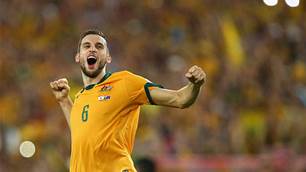
Popovic lures Spiranovic to Victory after two years out of football
